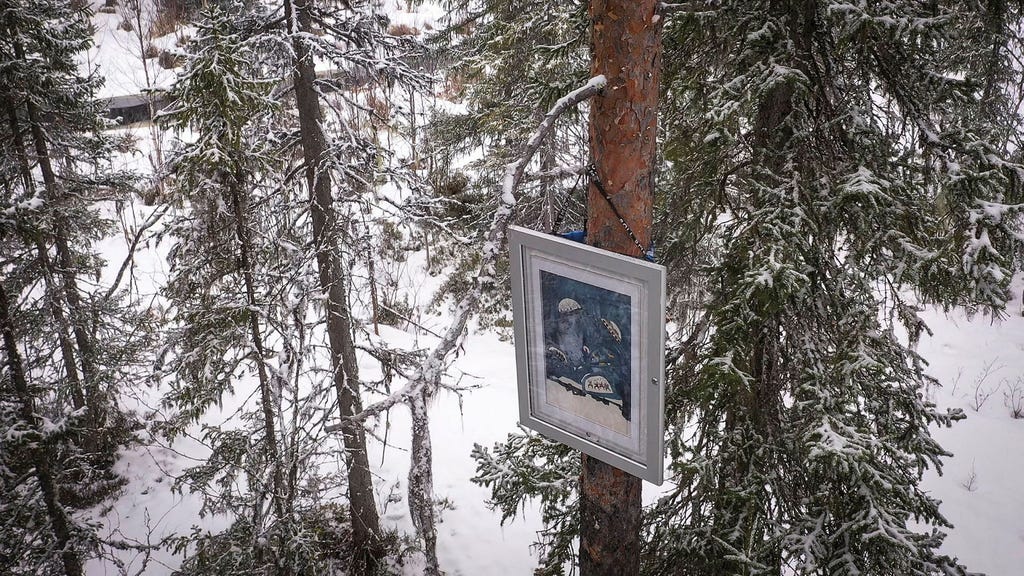The Gothenburg Film Festival, themed ”Focus: Disobedience,” explores the multifaceted nature of civil resistance. This year’s festival poster artist, renowned Sámi artist Britta Marakatt-Labba, embodies this theme through her decades-long advocacy for Sámi rights and environmental protection, both through activism and her evocative art. The festival commission led to three original watercolors by Marakatt-Labba, one of which was selected for the official poster. However, in a collaborative initiative with Greenpeace, all three artworks became integral to an activist project directly addressing the festival’s theme of disobedience.
The project focuses on the contested forests traditionally used by the Ohredahke Sámi reindeer herding community. Forestry company SCA, which owns the land, plans to log these areas, sparking conflict with the Sámi community who argue that these logging operations, targeting ecologically valuable old-growth forests, threaten their traditional livelihood. Marakatt-Labba’s artworks, protected in waterproof frames, were transported by activists on sleds deep into these forests and installed in three strategic locations. These installations are illuminated by solar-powered lamps and monitored by webcams, creating a virtual connection to the contested land.
This project transforms Marakatt-Labba’s art into a symbol of resistance against the planned logging. The artist herself, deeply connected to the cause and familiar with the struggles of the Ohredahke community, readily agreed to this unconventional use of her work. She expresses grave concern over SCA’s logging plans, emphasizing the irreversible damage to the environment and the disregard for the long-term consequences of prioritizing short-term profits. Her art, often featuring environmental themes, underscores the interconnectedness of the ecosystem and the devastating impact of deforestation on wind patterns and water cycles.
The placement of the artworks isn’t merely symbolic; it’s a strategic move by Greenpeace to protect the forest. By installing valuable artworks within the planned logging zones, Greenpeace hopes to deter SCA from proceeding with the deforestation until an agreement is reached with the Sámi community. The artwork’s combined value of 200,000 kronor, as estimated by Marakatt-Labba’s gallerist, further strengthens this tactic. Greenpeace contends that removing or damaging the installations would constitute a legal offense, requiring SCA to seek official channels for removal rather than taking direct action.
This initiative expands the reach of the festival’s theme of disobedience beyond the screen and into the real world. The public is invited to participate in this act of resistance by watching a live stream of the installations, broadcast from a dedicated space within the Draken cinema and also accessible through the festival’s website. This interactive element transforms the audience from passive viewers to active participants in the conversation about civil disobedience.
The project fosters a dialogue about the power of art and activism in challenging established norms and protecting vulnerable environments. By connecting the virtual audience with the physical reality of the contested forest, the project amplifies the voices of the Sámi community and raises awareness about the ongoing struggle against the potentially devastating ecological and cultural impact of the planned logging operations. The Gothenburg Film Festival, through this collaborative project, transcends its traditional role and becomes a platform for advocacy, highlighting the vital role of civil disobedience in contemporary society.














